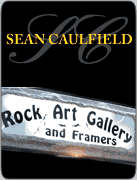VIEWS
MARKETING: Brand Mapping ââ¬â The Route To Small Business Prosperity
Recent Western Cape Business News
No matter how big or small your business, it needs to stand out from the competition. Building a brand that gives people an idea of what your company does and what it stands for can be enough to attract new customers and retain existing ones.
Small business owners who understand branding, and how it defines a company, may take branding for granted. For others, however, it may seem unnecessary and expensive. This perception couldn’t be further from the truth, says Ravi Govender, Head of Small Enterprises at Standard Bank.
“Branding needn’t be about expensive graphic design, up-market signage and pricey packaging. Effective branding can mean an identity that shows what you do, is recognised by your target audience, and provides clues to the values that make up your business. Branding your enterprise and products correctly adds to the air of professionalism you create,” says Mr Govender.
To the contestants who recently competed on Standard Bank’s ‘Think Big - Building Business Champions’ TV series, the use of a company name and branding was a central pillar in their success. All took care to ensure that they presented an image that was in line with the way their products needed to be perceived.
A clean, quality brand supported by professional service and streamlined production facilities says all it needs to.
“When a brand is instantly recognised by a consumer, it sets off a series of personal responses that make the person identify closely with the company or product. The product then becomes a ‘trusted friend’ rather than a mere product.
“Like most things that are worth doing right, there is a process that should be followed when implementing a branding strategy,” says Mr Govender. He suggests that you think carefully about the characteristics of your brand.
Then, on a piece of paper, map out:
· What the product is.
· Its strengths and what makes it different to similar products in the sector.
· Who you are selling to and what they want in a product or service.
· How you would like your customers to view your offering.
· Customer feedback obtained by approaching regular customers to ask them why they buy your product and what they know about your company.
This will give you the information you need to begin positioning your business and products in the market so that you can:
· Make your brand unique to your business.
It is very easy to look at a major competitor’s branding and think about using a company name, colours and brand names that echo these. It is not advisable to do this. Many customers will automatically believe that your product is inferior.
If the packaging and name are easily confused with the major competitor’s, they may opt to take legal action against you, and the expense of having to rebrand and rename your products - or even your company - could be very costly.
· Choose a name that tells people what you do.
A potential customer must see your company name and know exactly what you supply. It also pays to avoid using your first name in conjunction with a trade description. For example, calling your company ‘Brian’s Plumbers’ is fine, but customers then know that Brian owns the business. Generally, they will want service from Brian rather than one of his employees.
When selling a company, the use of a family name can also be problematic.
· Ensure that you are honest about your product claims, so that you can build a relationship of trust with customers. When you tell people what they can expect and you supply just that, they come back for more. If you over-promise and under-deliver, you may lose them as customers, plus all the people they tell about their experience with your company.
· Make sure that your company identity, as well as the logos and colours on your products are consistent.
Ensuring that all elements of your brand are always the same assists customers with their selection process. It is often the colours and logo on a branded product that catch the eye first.
· Use the web and social media to build brand awareness.
Chances are that people visiting these sites will believe the company is reputable. You could also make your site more memorable by using it to offer value-added services or advice.
For example, if you produce industrial and domestic fittings, include a section that clearly identifies what products are most suitable for specific uses. Offer hints and tips on using products, and how to avoid common problems. This will assist in building traffic to your site.
“Branding, like many things in business, is based on common sense. We all interact with brands and branded products every day. Observing and examining what you like or identify with in a brand will help with the mapping and positioning of your offerings.”
“Many consumers also associate consistent, attractive branding with quality, and are generally willing to pay more for what they really value.”
“Look at your company, decide what fits, develop an identity and brand, and then implement them. The results could amaze you,” says Mr Govender.
Business News Sector Tags:
|
|
||
|
Accommodation
Foreign Exchange
Directory
Fax 2 Email
Finance
Furniture
Online Casino
Restaurant
Shop Online
Study IT Online
Web Design
Weddings
Work from Home
|
||
|
Company News
|
||










